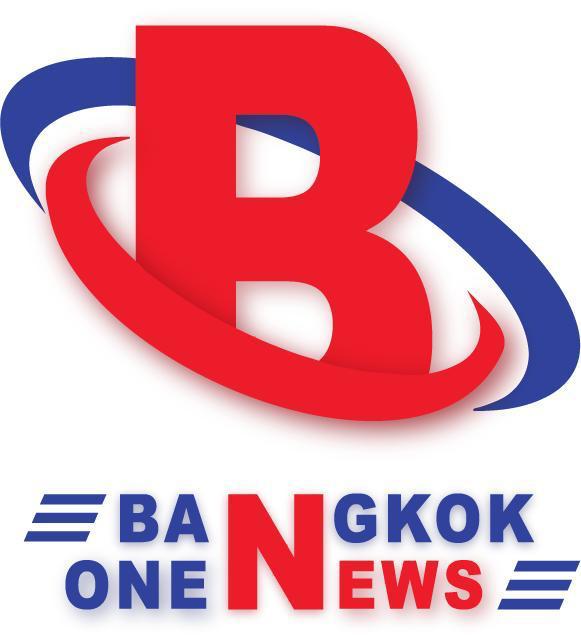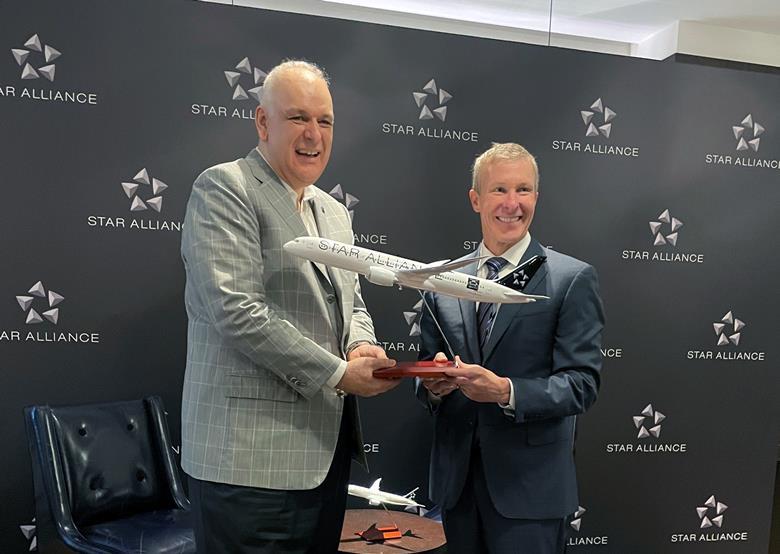As the three global alliances concentrate on tying together the customer experience for a largely established set of members, the senior management doors are constantly changing.
As the airline alliances pass, reach, or near their 25th anniversaries, airline executives are taking stock of their performance and insisting that they are still relevant, significantly add to annual revenues, and greatly aid in maintaining high-spending business travelers.
With the exception of the occasional resignation and ownership change, the excitement surrounding recruiting new members has subsided. The airline networks of each alliance are mostly in place, and in recent years, attention has been focused on the challenging task of tying the passenger experience across all members.
Theo Panagiotoulias was introduced to the media by United Airlines CEO Scott Kirby as the next CEO of Star Alliance at IATA’s AGM in Istanbul. Australian Panagiotoulias, a former employee of American Airlines and Sabre, transitions from Hawaiian Airlines, where he served as senior vice-president for global sales and alliances since 2014, to Star Alliance, the oldest and largest of the three major airline alliances. Patrick Roux has been the CEO of SkyTeam, the newest but still 23-year-old alliance, for nine months. Similar to Panagiotoulias, Roux has experience in the alliance industry, having served as senior vice president of alliances at Air France-KLM for the last six of his 20 years with the company.
After ex-Emirates and Qantas executive Rob Gurney announced his retirement from the alliance in May, Oneworld has started looking for a new CEO. Gurney will hold his position until July 1 at which point American Airlines Chief Commercial Officer Vasu Raja will take over as temporary CEO and oversee the hiring process for Gurney’s successor.
Gurney’s exit from Oneworld follows the transfer of its global headquarters from New York to Fort Worth, Texas, in October 2022, when it will join founding member American at the Robert L. Crandall Campus next to Dallas Fort Worth International Airport.
Raja and Gurney are collaborating to ensure a smooth transfer to Fort Worth after Gurney presided over his final Oneworld board meeting during the IATA convention. The action will unavoidably give founder American a stronger position of influence.
In contrast to the more aggressive commercial connections that involve creating joint ventures or buying equity holdings, alliances are the lighter touch of airline agreements, improving the customer experience.
According to Gurney, the Oneworld product fits perfectly with joint business arrangements that have extensive commercial integration, network planning, and revenue management: “What Oneworld does is provide an ecosystem for those partnership models to exist in, and how the benefits can be surfaced to the customer in a way that’s branded within a clear framework.”
“I don’t see that one is better than the other, but rather you’ve got an ecosystem now with multiple options, which is a natural evolution of alliances themselves,” says Panagiotoulias of Star.
Alliances do generate substantial money, despite being more difficult to assess and rarely being made public. Andres Conesa, the new chairman of SkyTeam and the CEO of founding member Aeromexico, emphasizes the “huge plus” of the network halo effect of belonging to the SkyTeam “club,” and although he admits it is difficult to quantify the direct financial impact, it is in the millions.
According to Roux of SkyTeam, the income benefit of membership in the alliance, which is expected to be worth hundreds of millions of dollars annually for all members and is increasing rapidly, is being quantified for each airline.
In order to justify new projects, present business cases, and draw in new members, he says, “We are working on it.” By the end of the year, Roux hopes to get this finished.
Although Gurney emphasizes that members are open about the importance of partnerships for their future commercial and strategic development, Oneworld does not intend to make data publicly available. “In an industry that’s inherently margin challenged, the interline flows that accrue across the Oneworld network are really important,” he says. While recruiting new members is not the chief executive of an alliance’s top priority, mergers and airline consolidation are having an influence and new members are filling up network gaps.
Virgin Atlantic became the first airline based in the UK to join SkyTeam in March. For mid-sized carriers like us, having that worldwide presence is essential. The airline’s chief commercial officer, Juha Jarvinen, continues, “And then it’s all about the loyalty consistency.
Oman Air will formally join Oneworld in 2024; Alaska Airlines and Royal Air Maroc joined in the previous two years. Oneworld is the smallest alliance in terms of the number of members.
It regularly communicates with airlines, including all of the players in India, which Gurney recently visited. They definitely want to keep up a positive communication with everyone and observe how things develop, he adds, “but not necessarily because any are about to join Oneworld, because they are not.
Gurney says, “It’s about being deliberate and purposeful about the partners we desire. Being a little smaller has its benefits. I believe we can be a little more flexible.
Following Lufthansa’s statement in late May that it had reached an agreement to buy a 41% interest in ITA Airways, the Italian airline will switch from SkyTeam to Star when the deal is finalized.
A carrier with a major ownership stake in another airline in an alliance must exit once effective control of the carrier is formally changed. For instance, IAG of Oneworld owns 20% of SkyTeam member Air Europa, but until a full takeover is agreed upon, the Spanish airline can continue to be a member of SkyTeam.
Rail operators have begun to join the list of alliance members, which is no longer just limited to airlines. With the formation of a cooperation between Star and Deutsche Bahn in Germany a year ago, the long-awaited debut of a multi-modal connection with alliances has begun. SkyTeam is also researching the possibility of growing its multi-modal partnerships, which Panagiotoulias thinks has a lot of potential.
The topic of sustainability is, however, at the top of the priority lists for airline chief executives and, to a lesser extent, for alliances. As with their cooperative purchases of normal Jet A-1 fuel, sustainable aviation fuel (SAF) appears to be one of the alliances’ most practical and sane measures.
On it, SkyTeam is already at work. “I think there is a great opportunity to work together and see how we can join forces,” said Conesa of Aeromexico. Star is also investigating this, while Oneworld is taking the lead with two big SAF acquisition agreements involving a portion of alliance members.
Due to the “opt-in, opt-out” strategy used after Covid, Oneworld’s SAF discussions were led by one member and involved certain members, but not all.
According to Gurney, “Our alliance has historically been consensus-driven by a group of people who have great chemistry and a great set of relationships.” But we also understand that sometimes it makes it difficult to move as quickly as we need to.
Gurney claims that in 2021 Oneworld implemented opt-in, opt-out into its government. In other words, “providing you have a minimum number of shareholders, representing a minimum amount of shareholding, that’s sufficient to green light a Oneworld initiative, provided those airlines fund it, the other members have the opportunity to opt-in at the inception or in the future either as a proof of concept or in full production,” he says.
According to Roux, the SkyTeam Sustainable Flight Challenge, which was held over two weeks in May, may lead to more initiatives.22 member carriers that offer a regular service are evaluated based on standards like reducing CO2 emissions and providing the best in-flight trash management in what is referred to be a “friendly competition” meant to promote the sharing of best practices. Later this year, there will be an award ceremony.
The chief executives of the member airlines in Istanbul told Roux that they want “acceleration, a focus on technology and the customer experience and the development of products that bring them more business” in addition to having a clear understanding of how SkyTeam generates revenue.
China Corporate Connection, a tool that has negotiated travel agreements with 100 Chinese firms, is one of the items created by SkyTeam, according to Roux. The offering gives businesses access to the networks of alliance members through a contract with SkyTeam, an impartial third party.
According to Roux, SkyTeam is considering making the product available everywhere.
According to Gurney, the goal at Oneworld is to resume a product roll-out that started in 2019 with Qatar Airways and Cathay Pacific but was halted due to the pandemic. This product enables customers to conduct all of their flight management tasks, such as check-in and rebooking, seamlessly on the website and mobile app of another Oneworld member.
According to Gurney, “We want to integrate Oneworld with our customers’ digital lives.” All the partnerships are vying for this skill, which is more of a customer relationship hygiene factor than a differentiation.
The changes at the top of the alliances are a reflection of how the chief executive role is evolving, how member airlines perceive the benefits of partnerships, and how the alliance product is evolving. As alliances develop, this job has changed, moving away from membership land-grabs and network growth to giving the financial benefits and top-notch customer service that airline members need to attract and keep valuable customers.
According to Oneworld’s Gurney, “When I started, we did a fundamental reset on how the alliance was functioning and operating and where it would be prioritizing its efforts.” “And that actually involved building a supportive infrastructure for the partnership environment.
“That seems easy, but there’s a lot of complexity and work involved, not just the central effort that’s needed to build the infrastructure, but also making sure that the member airlines are engaged and equally committed to doing it,” adds Gurney.
Creating an alliance “that feels more and more like a single airline instead of a lot of airlines under the umbrella of Star” is the goal, according to United’s Kirby.
“The real opportunity,” says Kirby, “is to really focus on making the customer experience seamless and so that if you buy a ticket on United no matter which Star partner you’re flying around the world, it looks, feels, and behaves the same as if you bought a United ticket.”
The new leaders are still far from finishing the job of attaining this, which is at the top of their priority lists.





